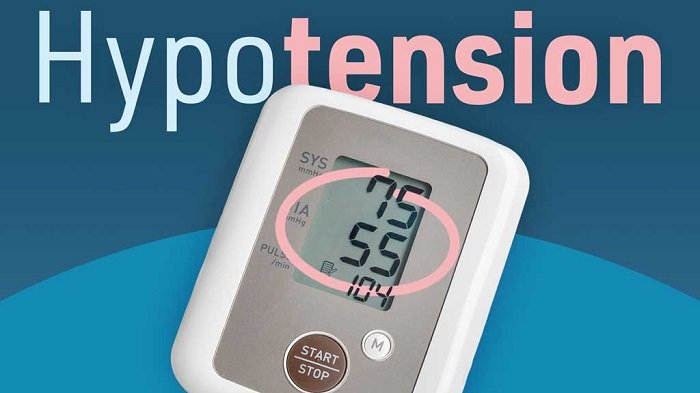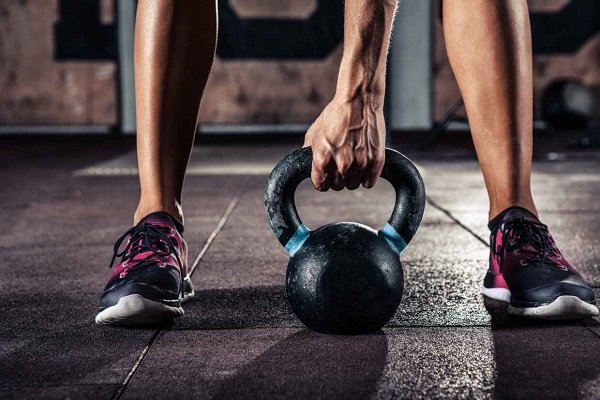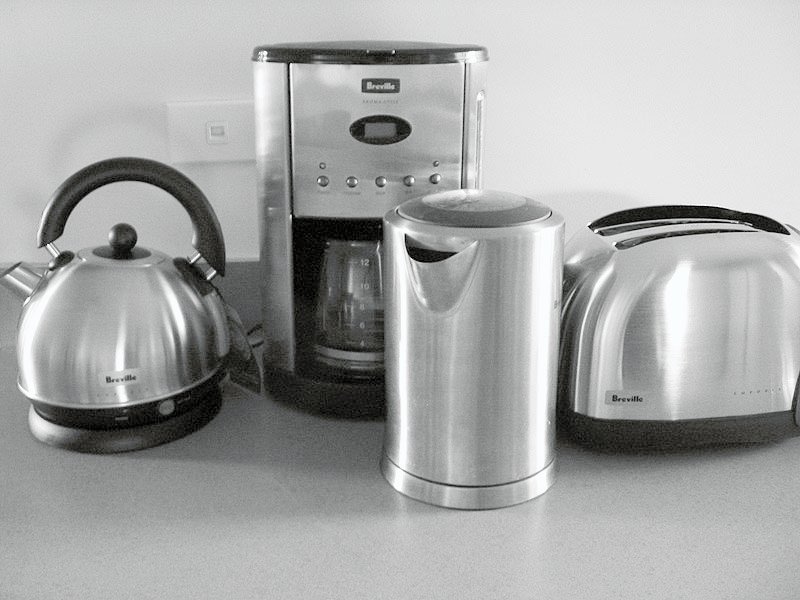Health Essentials
Blood pressure; How dangerously low can it go?

The conventional wisdom has always been that we should all strive to keep our blood pressure low. Even though this is true, having really low blood pressure can be dangerous, as it can impair your body’s ability to absorb oxygen, resulting in damage to the heart and brain.


Low blood pressure is when your blood pressure reading is lower than 90 millimeters of mercury (mm Hg) for the top number (systolic) or 60 mm Hg for the bottom number (diastolic).
Low blood pressure (also known as hypotentesion) can occur in anyone, though it may be more common depending on your age or other risk factors: genetic makeup, taking certain medications, and having certain diseases(diabetes, heart conditions)
The cause of low blood pressure isn’t always clear. However, it may be associated with the following:
- pregnancy
- hormonal problems
- some over-the-counter and prescription medications
- heart failure
- abnormal heart rhythms
- widening or dilation of the blood vessels
- heatstroke
- liver disease
- loss of blood from bleeding
- low or high body temperature
- a severe blood infection
- severe dehydration from vomiting, diarrhea, burns or fever
- a reaction to medication or alcohol
A sudden drop in blood pressure robs the brain of adequate blood supply to the brain. This can lead to dizziness or lightheadedness. Other symptoms include fainting, blurred vision, nausea, fatigue, lack of concentration, and in extreme conditions shock.
If you experience any of the above symptoms, seek emergency medical attention as it is important to determine the cause of low blood pressure so appropriate treatment can be given.
Some people are known to take alcohol in an attempt to increase their blood pressure but that is a path I will not recommend. Others opt for caffeinated drinks like coffee and tea. Dr. Kojo Essel often recommends that one engages in exercise which is your best “weapon to normalise blood pressure.” Quite often when one has low blood pressure, standing still for long periods of time can cause a further drop in blood pressure due to peripheral pooling of blood and may cause complications. In such people Dr Essel highly recommends taking several steps even if standing in one place to help maintain blood pressure at a safe level.
Other ways of managing low blood pressure are:
- adding a little salt to food ( do this with caution to avoid excesses and downsides of increased salt intake)
- Increase water (other fluids) intake to increase blood volume.
- May need to wear compression stockings in extreme situations
- Some may require medication.
- Pay attention to body positions; do not move quickly from sitting to standing position for instance
- Eat small portions of food at a time
- Exercise should be a combination of strength training and cardiovascular exercise that increases heart rate)
Source:
Maureen Masopeh
Content Creator (Health Essentials Ghana Ltd)
References:
- Dr Kojo Cobba Essel; Unravelling the Essentials of Health and Wealth
- Mayoclinic; Low Blood Pressure (Hypotension)
- Webmd
By Dr Kojo Cobba Essel
Health Essentials
Are you still waiting to fall sick before eating well?
This week I feature an amazing writer as we take a break from the discussion on Nutrition. After reading the article I just had to share.
Diet tips nauseate many people, they just do not want to hear them. Often, they say, now that they can afford food; they are being asked not to eat. These comments make us dieticians feel unwanted by such persons.
We do know that people who make excuses to be able to eat just any how do lack the necessary understanding of how food can damage their health and ruin their lives. To them, food is just meant to be enjoyed as a reward for their hard work. This is a sorry situation, I must admit. Not everything you can afford is good for your health.
On the contrary, I have come across some persons who can even afford all the food in the world but exercise a lot of restraints, just so they eat only what is healthy and safe for them. They are well informed about the fact that eating just anyhow can make them sick. This is good and anyone who falls under this category is encouraged to continue being who they are.
The food you eat determines how healthy you become in the medium to long term. Non-communicable diseases i.e. diabetes, hypertension, obesity, heart diseases, etc can be brought upon you just because you eat just anything food in the wrong quantities and at the wrong times.
And so, eating the right foods can also make it possible for you to avoid these lifelong diseases.
Pay attention to what you eat, let what you eat be in your plans for the day. Then plan for the food to be available, so you eat on time. Do not be like those who just start their day and only know about food when hunger strikes; such people always end up eating any food that comes their way.
If possible, cook your own food, and even take some along for lunch when going to work. If you must buy food and you can talk to your catering service provider, talk to them about the need to go low on oil, salt and frying.
Get the catering service provider of your company trained on healthy cooking methods by a qualified dietician so that whatever they churn out for your consumption at work is healthy. On the contrary, when you leave them to do their own thing, you are sure to be eating unhealthy foods. They will only serve you what is delicious and appealing, not what is healthy.
The question is are those nice smelling and nice tasting foods healthy for you? Remember that repeated intake of the wrong foods at work means a lifelong habit of eating bad foods which is a sure way to developing non-communicable diseases.
Do not join those who care-less about what they eat; such people are planning a future of misery with bad diseases. Get it done right and eat the right foods in the right proportions and at the right time.
Get a dietician’s advice on how best to cook and eat your food; you will thank me later!!!
The writer is a Dietician with LETS Consult (Dieticians, Diet foods, Diet books) & Author of the following books;
1. Eating to prevent and manage lifestyle diseases.
2. Live long by eating well – Vol. 1
3. Be your own dietician – Vol. 1
Tel/WhatsApp: 0595667197, Email: letsconsult@gmail.com, Website: www.letsabooks.com
AS ALWAYS LAUGH OFTEN, ENSURE HYGIENE, WALK AND PRAY EVERYDAY AND REMEMBER IT’S A PRICELESS GIFT TO KNOW YOUR NUMBERS (blood sugar, blood pressure, blood cholesterol, BMI)
Dr Kojo Cobba Essel
Health Essentials Ltd (HE&W Group)
(dressel@healthessentialsgh.com)
*Dr. Essel is a Medical Doctor with a keen interest in Lifestyle Medicine, He holds an MBA and is an ISSA Specialist in Exercise Therapy, Fitness Nutrition and Corrective Exercise. He is the author of the award-winning book, ‘Unravelling The Essentials of Health & Wealth.’
Thought for the week – “The majority of us need to Eat Less and remember that one cannot exercise or medicate himself out of a bad diet.”
By Wise Chukwudi Letsa
Health Essentials
Safety like charity, begins at home

“The day is near at hand when the doctor will no longer be engaged to patch up the sick man, but to prevent him from getting sick. He will VISIT FAMILIES, EXAMINE THE PREMISES, inspect factories and shops and give instruction to his patients how to keep from getting sick…….”- 1908 article.
A very accurate prediction I must say as health and wellness continues to evolve.
Safety in our homes is an extremely important issue since preventable injuries and deaths continue to rise in homes and communities. To make a significant impact, we need to be aware of the hazards around us and change our behaviour. One little change at a time could lead to great results.
It is frightening to learn that in some countries, up to 70 per cent of all unintentional-injury deaths occur in the home or community. In plain language you are more likely to be injured at home than anywhere else. Each year thousands of people are off work for more than a week as a result of a fall at home, and this has a big effect on businesses and organisations.
The leading causes of unintentional injury in the home and community include:
1. Poisoning
2. Falls
3. Choking
4. Drowning
5. Fires/flames
WATCH THESE AREAS
• Kitchen and cooking areas
o A no-go area for children. Everyone working in the accident and emergency department of a hospital will tell you that on Saturdays and Sunday afternoons when most people do their weekly cooking, many children suffer from severe burns.
o Appropriate way of using the burners on a stove. Avoid handles of cooking pots facing your work area. The gas cylinder should be in a very well-ventilated area outdoors
o Care of spills. Clean them as soon as they occur to avoid slips.
• Electrical Appliances
o All appliances switched off after use and plug removed from socket
o Avoid touching of an electrical appliance with wet hands
o Electrical cords should be out of the way to avoid tripping people.
• Bathroom
o Children should never be left alone in a bathroom
o The use of mats in a bath especially for children and the elderly
o The elderly (above 65 years but could be younger depending on the health status) should use showers with support bars and stools instead of bathtubs.
• Other areas
o Avoid making a mess since they can cause one to trip sometimes with grave consequences. Children should be taught to pick up their toys after use.
o Adults should avoid drinking from bottles since children copy this habit and may harm themselves in the process. In our setting many children tend to drink kerosene stored in “soft” drink bottles. We then worsen the condition by forcing them to drink palm oil and inducing vomiting and often getting this concoction into their lungs. Who really “instituted” this criminal sentence?
o All medications, chemicals, small substances etc should be kept out of the reach of children
OTHER GENERAL STEPS TO AVOIDING HAZARDS
1. Look around for anything that may cause an accident. Make use of the different senses, sight, smell, hearing, touch. May not be a smart idea to try taste.
2. Decide who is most at risk. This helps you to make appropriate changes
3. Take preventive measures. After reading this piece make the changes necessary. Do not wait to “learn from experience” it may not always be wise to learn from the best teacher.
4. Keep a record of what you have changed
5. Continually check your living space – please do not think that making a one–time attempt is all that you need. Do this every day or every week.
COMMON CAUSES OF ACCIDENTS IN THE HOME
1. Poorly organised and cluttered walkway
2. Inadequate or unsuitable lighting
3. Moving or handling a load incorrectly – remember that waist or back pain?
4. Rushing around with careless abandon. Most of the time we end up losing time.
5. Tiredness. We commit errors when tired. Do not try to cheat nature, get some rest.
6. Lack of balance or appropriate mobility.
7. Poor eyesight and/or inappropriate corrective lenses.
8. Medication that may lead to dizziness. The elderly for instance who are on several medication have an increased risk of falling.
ECONOMIC COSTS OF ACCIDENTS AT HOME
The cost of home accidents is high in terms of the number of lives lost and resulting permanent disabilities. Several working days are lost, which translates into lost productivity. Huge sums of money may be lost seeking medical care and the quality of life is also poor.
The benefits of prevention of injuries at home are clear and quantifiable in terms of health and economic costs:
• Potential to save lives
• Improved quality of life
• Reduction in cost of hospital care
• Improved productivity through people’s contribution to the economy.
With all these benefits that we can chalk from keeping our home safe, one wonders why very little is heard about bringing safety home. Hopefully this will be the beginning of a nationwide drive.
Let us all pledge to “reduce the number of accidental deaths and injuries in our homes.” A home should be a place where we are absolutely SAFE.
AS ALWAYS LAUGH OFTEN, ENSURE HYGIENE, WALK AND PRAY EVERYDAY AND REMEMBER IT’S A PRICELESS GIFT TO KNOW YOUR NUMBERS (blood sugar, blood pressure, blood cholesterol, BMI)
Dr. Kojo Cobba Essel
Health Essentials Ltd (HE&W Group)
(dressel@healthessentialsgh. com)
*Dr Essel is a Medical Doctor with a keen interest in Lifestyle Medicine, He holds an MBA and is an ISSA Specialist in Exercise Therapy, Fitness Nutrition and Corrective Exercise. He is the author of the award-winning book, ‘Unravelling The Essentials of Health & Wealth.’
Thought for the week – “Whatever you practice GROWS STRONGER! What are you practicing?”
References:
1. www.nsc.org (national safety council)
2. www.homesafety.co.nz
3. www.injuryobservatory.net
4. www.webmd.com
By Dr. Kojo Cobba Essel







